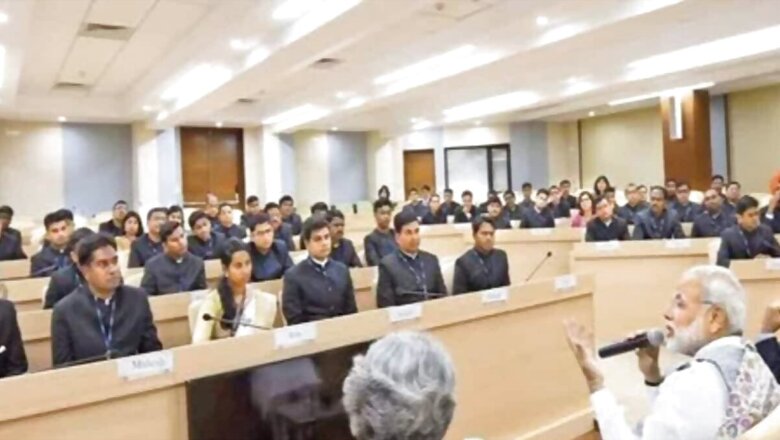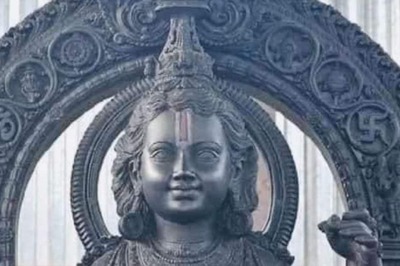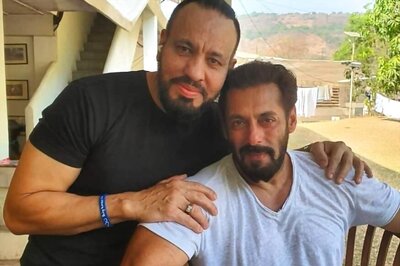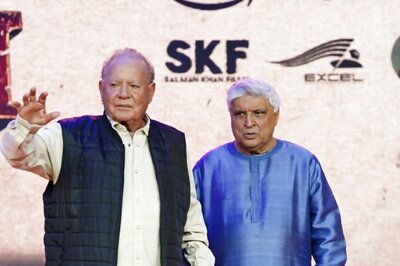
views
Over the last eight months, between December 2023 and July 2024, the central government has issued five letters to states, urgently seeking Indian Administrative Service officers for key positions, particularly at the joint secretary (JS) and director and deputy secretary levels. In the letters, accessed by News 18, the government has listed the reservation rules and the specific quota for Scheduled Caste, Scheduled Tribe, and Other Backward Class candidates, urging the states to send candidates with more representation from these communities.
Amid this acute shortage of IAS officers, the government’s current plan to fill the gap through lateral entry has sparked controversy and hit a bottleneck, adding another layer of complexity to the situation.
In 2024 alone, the central government has dispatched at least three letters to various state governments, urging them to nominate IAS officers for positions at the joint secretary (JS) and director/deputy secretary levels. Two of these letters were sent in July, while one was written in April. The letters underscore the critical shortage of IAS officers at the central level, a concern further amplified by the Sushil Modi committee report, tabled in December 2023.
News18 has accessed all five letters written by the department of personnel and training (DoPT) to the states and other related documents about the vacancies in the IAS bureaucracy levels at the Centre and the requirement of lateral entry.
IAS Crunch Spurs Push for Larger Lateral Hires
In a DoPT document dated May 2023, it was stated that 16 additional secretary, 24 joint secretary, and 58 director/deputy secretary posts were available under the Central Staffing Scheme.
The document also noted that 20 positions across 12 ministries were to be filled via lateral entry. Subsequently, in June 2023, the Union Public Service Commission issued advertisement no. 53/2023, inviting applications for 17 positions, including three at the joint secretary level in multiple ministries, such as finance and health. Significantly, the advertisement, like previous ones for lateral entry, made no mention of reservations.
Despite resistance from a section within the bureaucracy, the government is grappling with a severe shortage of senior IAS officers, stemming from low intake until 2002-2003. This scarcity has worsened as state governments fail to meet the central deputation reserve, said a senior IAS officer serving in the central government.
He added that the recent advertisement was issued as per the requisition by the DoPT for officers at the joint secretary and deputy secretary ranks.
“The IAS amendment rules 2022, seeking to overcome the dire shortage of IAS officers in the central government, proposed new rules that would have taken away the power of states to veto New Delhi’s request for officers. The amendment did not see the light of the day following objections from the state,” said another senior IAS officer. “The DoPT keeps sending letters and reminders to the government, but there are no adequate officers, even some of the empanelled officers were not cleared by the respective states.”
UPA vs NDA: The Battle Over Lateral Entry Policy
“The idea of lateral entries, which means inducting domain experts from the private sector, has been recommended by several committees constituted on reforms. The committees over the years have scrutinised the recruitment process for civil services, including those led by Kothari (1976), Satish Chandra (1989), YK Alagh (2001), Surinder Nath (2003), Hota (2004), SK Khanna (2011), Nigavekar (2011), and Baswan (2016),” said a retired IAS officer, who served as DoPT secretary and is still part of some government committees.
These committees consistently highlighted the need to induct more professionally competent individuals into the civil services, he said. “Some committees, specifically Hota and Baswan committees, recommended lateral hire to enhance the quality of civil services. In 2005, the Second Administrative Reforms Commission (ARC), chaired by Congress leader Veerappa Moily, advocated for an institutionalised and transparent process for lateral entry at both the central and state levels. Similar recommendations were echoed by Niti Aayog and by the 6th Central Pay Commission (2013) too,” he added.
However, there was no reservation rule formulated for lateral hires, neither by the UPA government nor by the NDA, because for market experts, reservation was not a point of consideration, he said.
KM Chandrasekhar, an IAS officer who retired as the cabinet secretary under Prime Minister Manmohan Singh’s government in 2011, worked on a public administration reform framework, which also included issues related to lateral hire.
“The earlier committees and the framework we worked on were result-oriented. The lateral hires were academic and market experts like Montek Singh Ahluwalia, Nandan Nilekani, S Ramadorai and other noted personalities with authority on subjects. They were inducted in the ranks of secretary or ministers,” said Chandrasekhar. “There was no hiring at the joint secretary level. The current hirings have become a part of the process-oriented system. In this way, none can achieve results. even as the candidates coming through UPSC examinations, are talented people, coming from IITs or IIMs. But, in a system like this, getting results seems difficult. It is not about an individual but about a system.”




















Comments
0 comment